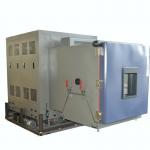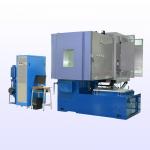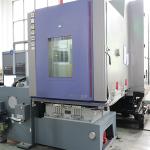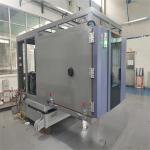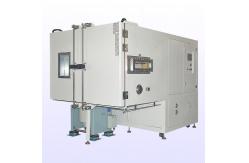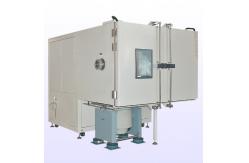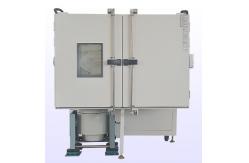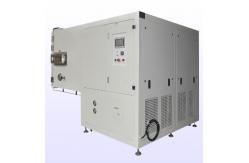In the fast - paced and highly competitive world of consumer
electronics, ensuring the reliability and durability of products is
crucial. The Vertical Vibration Test Equipment Combined
Environmental Test System is a specialized solution designed to
meet the unique testing needs of this industry. This integrated
system allows manufacturers to subject consumer electronics to a
variety of stressors simultaneously, replicating the real - world
conditions these products may encounter during their lifespan. This comprehensive test system is specifically tailored for
consumer electronics. It combines vertical vibration testing
capabilities with other environmental factors such as temperature,
humidity, and sometimes even dust and moisture ingress. The primary
purpose is to evaluate how consumer electronics, including
smartphones, tablets, laptops, wearables, and audio devices,
perform and endure under the combined stress of mechanical
vibrations and changing environmental conditions. By simulating the
rough handling, transportation vibrations, and varying ambient
conditions that these products are likely to face, manufacturers
can identify potential weaknesses, improve product designs, and
enhance the overall quality and reliability of their offerings. - Precise Vibration Control
- The vertical vibration test equipment can generate a wide range of
vibration frequencies, typically from 1 Hz to 2000 Hz. This allows
for the simulation of different types of vibrations, from the low -
frequency rumbling during transportation to the high - frequency
vibrations caused by sudden impacts. The vibration amplitude is
also adjustable, with a range of 0.1 mm to 100 mm (peak - to -
peak). This precision enables manufacturers to test products under
various levels of vibration intensity, closely mimicking real -
world scenarios.
- The vibration profile can be customized according to specific test
requirements. Operators can create complex sequences that include
continuous vibrations, intermittent shocks, or a combination of
both. For example, a test profile can be designed to simulate the
vibrations a smartphone might experience during a long - distance
journey in a vibrating vehicle, with occasional bumps and jolts.
- High Payload Capacity
- The system is designed to handle a variety of consumer electronics
products, regardless of their size and weight. It has a payload
capacity that can support items from small, lightweight earbuds to
larger laptops and gaming consoles. This ensures that a wide range
of consumer electronics can be tested effectively without the need
for multiple test setups.
- Wide Temperature and Humidity Range
- The environmental test chamber integrated with the vibration system
can achieve a broad temperature range, usually from - 40°C to +
85°C. This allows for the simulation of extreme cold and hot
conditions that consumer electronics may encounter, such as being
left in a cold car during winter or in a hot, sunny place. The
humidity control can maintain relative humidity levels from 10% to
95%. This is essential for testing how products respond to
different moisture levels, as excessive humidity can cause
corrosion, short - circuits, and other damage to electronic
components.
- The temperature and humidity control is highly accurate, with an
error margin of within ±0.5°C for temperature and ±3% for humidity.
This precision ensures that the test conditions closely replicate
the actual environmental conditions, providing reliable and
consistent test results.
- Fast Temperature and Humidity Transitions
- The chamber is capable of rapid temperature and humidity
transitions, which is crucial for simulating sudden changes in the
environment. For example, when a consumer takes a device from an
air - conditioned room to a hot and humid outdoor environment. The
system can achieve temperature transition rates of up to 5°C/min
and humidity transition rates of up to 5%/min, allowing for the
testing of how components respond to these abrupt changes without
compromising accuracy.
- Sealed and Controlled Environment
- The environmental test chamber is designed to be a sealed and
controlled environment. This ensures that the test conditions are
isolated from external factors, providing a consistent and reliable
testing environment. It also helps in preventing the entry of dust,
dirt, and other contaminants, which can affect the test results.
|
